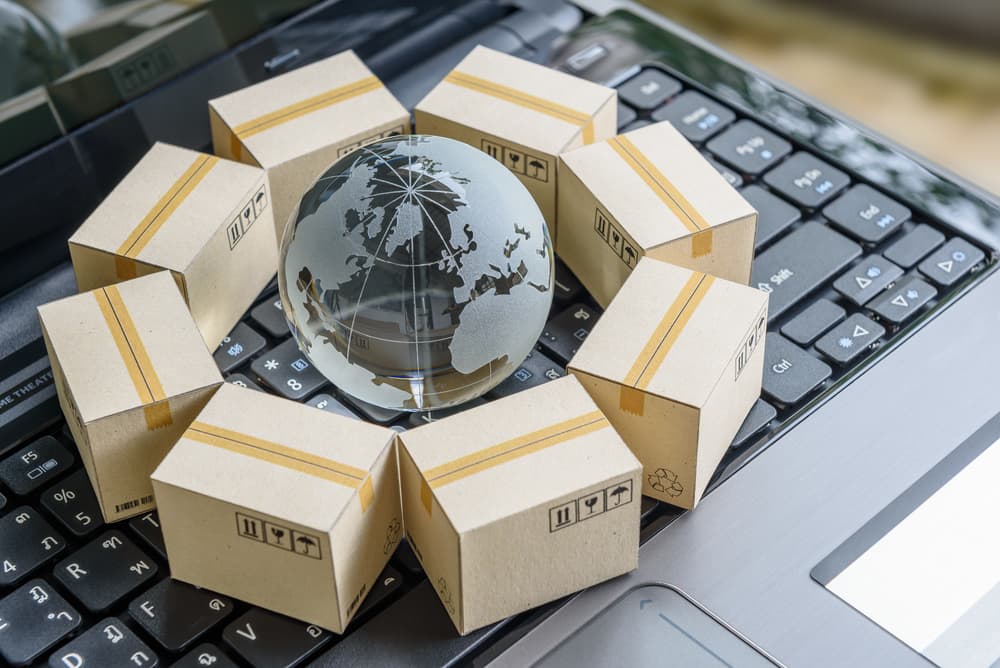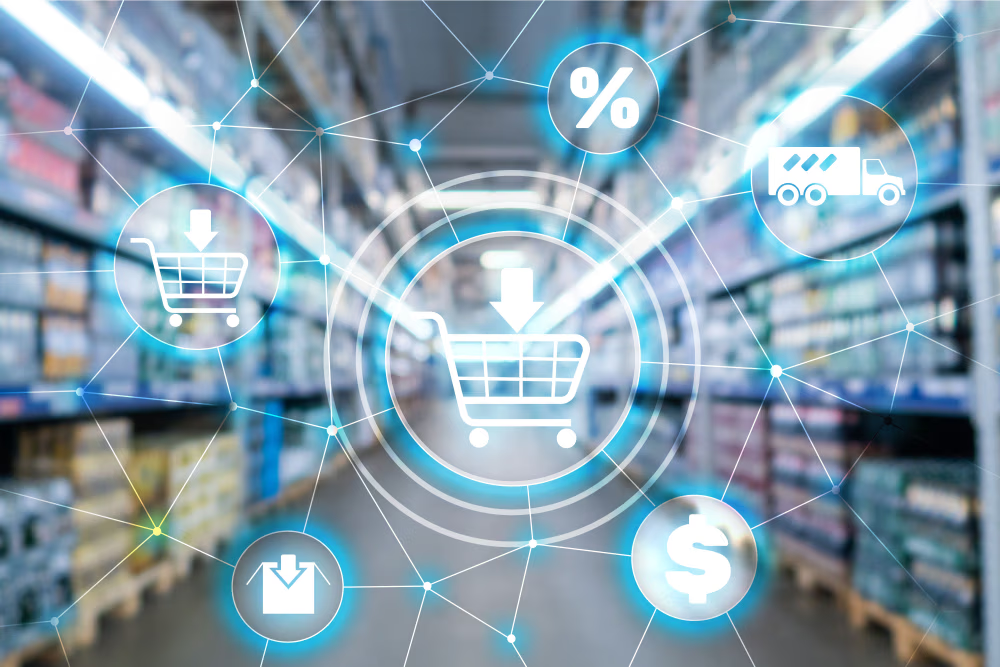In this guide, we'll walk through what a distribution channel is, the two main types, how they function in logistics, and how modern tools like EDI can simplify the entire process.
Distribution channels are the backbone of supply chain logistics. They determine how goods move from manufacturers to consumers—and how efficiently that journey happens. Whether you're a brand new supplier or optimizing a legacy network, understanding distribution channels helps you increase speed, reduce costs, and stay competitive.
What Is a Distribution Channel?
A distribution channel is the route a product takes from manufacturer to end consumer. It can be as simple as a direct sale from a DTC (direct-to-consumer) brand or as complex as a multi-tiered network of agents, wholesalers, and retailers.
Distribution channels serve one goal: to ensure that products are available where and when consumers need them. These channels play a key role in supply chain efficiency, customer satisfaction, and profit margins.
Distribution Channels in Logistics and Supply Chain
In logistics, distribution channels define the operational steps required to deliver goods. In the broader supply chain, they define the strategic relationships and infrastructure that enable scale.

What Are the Three Main Types of Distribution Channels?
There are two primary types of distribution channels:
1. Direct Distribution Channels
A direct channel means the manufacturer sells directly to the consumer—with no middlemen. This gives companies more control over brand experience and margins, but requires more internal resources.
Examples of direct distribution channels:
- A bakery selling through its own storefront
- DTC ecommerce brands shipping directly to consumers
- SaaS companies selling directly via subscription
2. Indirect Distribution Channels
An indirect channel involves one or more intermediaries—such as wholesalers, brokers, or retailers—who help move products to the end customer. This approach enables broader market reach with fewer internal resources but reduces margin control. An example of indirect distribution is a manufacturer selling its products through department stores, Amazon, and Shopify.
Examples of indirect distribution channels:
- A beverage company distributing through supermarkets
- Electronics sold through Amazon or Best Buy
- Clothing brands using third-party retailers
3. Hybrid Channel Distribution
Hybrid channel distribution is a combination of direct and indirect channels. Manufacturers sell products directly to consumers through their own retail outlets and online platforms while also employing intermediaries in specific regions or markets.
Types of Distribution Channels
Beyond the two main types, distribution channels are often categorized by how many intermediaries they include. Here are the most common levels:
Level 0: Direct to Consumer
Manufacturer → Consumer
- No intermediaries involved
- Maximizes control and profit margin
- Requires strong logistics and customer support
Level 1: Retail Distribution
Manufacturer → Retailer → Consumer
- Retailers handle consumer-facing sales
- Common for consumer goods and fashion brands
- Faster market access with lower operational burden
Level 2: Wholesale Distribution
Manufacturer → Wholesaler → Retailer → Consumer
- Useful for large-volume production
- Wholesalers help aggregate demand and regionalize inventory
Level 3: Agent-Assisted Distribution
Manufacturer → Agent → Wholesaler → Retailer → Consumer
- Often used for global or specialized distribution
- Agents negotiate on behalf of the manufacturer
- Adds complexity but may be necessary for scale

Key Components of a Distribution Channel
Component | Role in the Channel |
|---|---|
Manufacturer | Produces goods and initiates the distribution flow |
Buys in bulk, stores, and redistributes to retailers | |
Retailer | Sells directly to end customers, online or in-store |
Agent/Broker | Facilitates deals, often without owning the product |
Consumer | Final recipient of the product or service |
Distribution Channel Strategy: What to Consider
Choosing the right distribution channel depends on your product, goals, and market.
Key questions to ask:
- Is my product high-touch or low-touch?
- Do I want control over the customer experience?
- What level of logistics investment am I willing to make?
- Where is my target customer shopping today?
Tip: B2B and B2C strategies often require different channel mixes. A flexible, tech-enabled system like Orderful can help you adapt quickly.
5 Tips to Improve Your Distribution Strategy
- Map your customer journey: Start with the end user and work backward to design the ideal channel path.
- Embrace automation: Use EDI software to reduce errors and eliminate manual document handling.
- Diversify channels: Consider a hybrid approach (direct + indirect) to maximize coverage and resilience.
- Strengthen partner relationships: Clear communication and fast onboarding create long-term channel loyalty.
- Monitor and optimize: Use real-time data to adjust your strategy as markets evolve.
How Orderful Streamlines Distribution Channel Operations
Distribution efficiency depends on how fast and accurately you can exchange documents like POs, invoices, and ASNs across the channel. That’s where Orderful comes in.
Orderful’s modern EDI platform:
- Digitizes and validates transactions in real time
- Eliminates chargebacks and delays due to formatting issues
- Integrates directly with ERPs and retail partner systems
- Accelerates onboarding with retailers and distributors
Whether you’re selling direct or indirect, Orderful keeps your data flowing and your partners happy.
Distribution Channel FAQs
What is a distribution channel?
A distribution channel is the route a product takes from a manufacturer to the final consumer, often involving intermediaries like wholesalers and retailers.
What is an example of a channel of distribution?
A common example of a distribution channel is:
Manufacturer → Wholesaler → Retailer → Consumer
This model is used in industries like electronics, apparel, and packaged goods where scale and distribution reach are critical.
What are the three main channels of distribution?
The three main types of distribution channels are:
- Direct distribution – Products go straight from the manufacturer to the consumer
- Indirect distribution – Involves one or more intermediaries (like wholesalers or retailers)
- Hybrid distribution – A mix of direct and indirect strategies used simultaneously
What are the 4 channels of distribution?
The four main channels of distribution are:
- Direct channel – Manufacturer sells directly to the consumer
- Retailer channel – Manufacturer → Retailer → Consumer
- Wholesaler channel – Manufacturer → Wholesaler → Retailer → Consumer
- Agent/broker channel – Manufacturer → Agent → Wholesaler → Retailer → Consumer
What is the role of distribution channels in logistics?
Distribution channels manage how goods move across the supply chain, affecting costs, delivery speed, and customer satisfaction.
How does EDI support distribution channels?
EDI (Electronic Data Interchange) automates document exchange between trading partners, reducing errors and improving speed across supply chain operations.
- 01What Is a Distribution Channel?
- 02What Are the Three Main Types of Distribution Channels?
- 03Types of Distribution Channels
- 04Key Components of a Distribution Channel
- 05Distribution Channel Strategy: What to Consider
- 065 Tips to Improve Your Distribution Strategy
- 07How Orderful Streamlines Distribution Channel Operations
- 08Distribution Channel FAQs

